#nocode database
Explore tagged Tumblr posts
Text
Utilizing Low-Code Software's Potential through Scalability and Flexibility
Learn how low-code software solutions are enabling businesses to expand and adapt in the fast-paced market environment of today by exploring their scalability and adaptability. Discover how low-code platforms are helping companies to easily scale their apps and satisfy changing user demands, from seamless integrations to configurable processes.

0 notes
Video
youtube
I'm #Building and #Training My Own #AI
I'm building and training a personal hashtag#AI, using a hashtag#software called hashtag#AnythingLLM. With it, I can download any free, hashtag#opensource model I like, hashtag#nocoding required. I'm using hashtag#Chroma, a free database with good capacity. Now I can load my 650+ stories into Chroma, a process called embedding, and I can ask my AI questions about my characters, settings, and more. Since it's hosted on my PC, I don't have to worry about my data getting read by online AIs or chunks of my stories showing up in someone's AI answer.
#youtube#ai#personal ai#writing assistance#personal assistant#free AI#open source#free to install#free to use#local server
0 notes
Photo
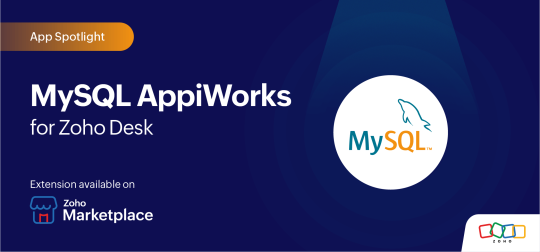
🚀 Exciting News for #CustomerService and #DataManagement Enthusiasts! 🎉 As businesses strive to enhance customer experiences, the integration of helpdesk software with robust database management systems is no longer just an option—it's a necessity. That's why the MySQL AppiWorks extension for Zoho Desk is a game-changer! 🌟 ### Here's Why I'm Impressed: Working in the SaaS industry, I've seen many struggle with the manual integration of software systems—often leading to data desynchronization and errors. But with MySQL AppiWorks for Zoho Desk, it's a whole different story. This no-code integration and automation solution simplifies the process, ensuring that data flows seamlessly between Zoho Desk and MySQL. ### Key Features That Stand Out: - **Automated and on-demand data export:** Whether you're creating a new record or updating an existing one, data gets exported automatically to MySQL. - **Data import capabilities:** Bring MySQL data back into Zoho Desk as you need. - **Bulk operations and visual tracking:** Manage large volumes of data effortlessly and visualize the progress in real-time. ### Personal Reflection: Remember the days we used to switch endlessly between applications to manage data? With solutions like MySQL AppiWorks, those days are long gone. Now, we can focus more on delivering personalized, timely, and highly responsive service to customers—boosting satisfaction and loyalty. 💡 What has been your experience integrating database management with your customer service platforms? Have tools like these changed the game for your business? 👇 Drop your thoughts and experiences below! --- 🔗 For those looking to enhance their Zoho Desk capabilities, check out the MySQL AppiWorks extension in the Zoho Marketplace. Maximize your customer service potential today! #ZohoDesk #MySQL #Automation #NoCode #TechSolution #SaaS #BusinessIntelligence #DataSync Explore expert advice and resources on our blog https://zurl.co/P4EZ. Don’t miss out – create your free account today! https://zurl.co/qCHA
0 notes
Text
Strumenti futuri: AnswerFlow AI


AnswerFlow AI è uno strumento versatile per la creazione di chatbot che consente agli utenti di creare bot ChatGPT personalizzati e basati sui dati semplicemente collegando varie origini dati come documenti, database e collegamenti, senza necessità di codifica. Questi bot possono analizzare i dati e fornire approfondimenti in tempo reale, rendendoli utili per un'ampia gamma di applicazioni, tra cui analisi dei dati, assistenza clienti, analisi delle vendite e sviluppo del prodotto. Le persone potrebbero voler utilizzare AnswerFlow AI per migliorare la propria produttività aziendale consentendo un rapido accesso a insight basati sui dati e riducendo la necessità di passare da uno strumento all'altro, tutti alimentati dall'intelligenza artificiale.🚩 AVVERTIMENTO: Questo strumento è stato contrassegnato per aver tentato di ingannare il sistema di voto positivo, per recensioni negative dei clienti o per pratiche losche! Si prega di essere consapevoli e di utilizzare questo strumento con cautela. Attualmente è in fase di revisione! Il voto positivo è stato disattivato per questo strumento finché non saremo giunti a una conclusione.Uno strumento nocode per creare chatbot per analisi e approfondimenti in tempo reale.Nota: Questo è un Google Colab, il che significa che in realtà non è un software come servizio. Si tratta invece di una serie di codici precreati che puoi eseguire senza dover capire come programmare.Nota: Questo è un repository GitHub, il che significa che è un codice che qualcuno ha creato e reso pubblicamente disponibile affinché chiunque possa utilizzarlo. Questi strumenti potrebbero richiedere una certa conoscenza della codifica. Source link Read the full article
0 notes
Link
The correct online database can assist your company by supporting and optimizing several business processes. Such as data reporting, data accessibility, and employee synergy.
0 notes
Photo

What is Xano Xano is among the few no-code backend solutions that include a full database testing environment, allowing it to move between production and test data with ease. It also gives API call history as well as simple techniques to track CPU and database record usage. Xano provides a scalable server, a customizable database, and a No-Code API builder for transforming, filtering, and integrating data from many sources. It facilitates the transition from a spreadsheet to a more complex database. The data is hosted by Xano on PostgreSQL, the world's most powerful open-source database. It combines the power of a relational database with the Big Data requirements of a NoSQL solution. Products Technology: Xano is a complete node without any need to obtain any modules or SDKs. All users have to do is point and click on the safety system. Single-tenant design or deployment. Data isolation, data security, dependability and performance, and fast recovery are all features of instances. The user is the sole tenant on the server (instance) architecture, and server resources and CPU are devoted to the tenant inside that instance. Allow users to choose which areas the instances will be hosted in. Security: Xano realized the meaning of data security. It has implemented the most appropriate security methods, processes, controls, and practices to protect data. Security is critical, and the application's or company's integrity depends on it. To develop confidence in Xano, Xano has taken certain safeguards and implemented security best practices. Solutions from Xano Shopify, Google Analytics, and Segment can connect with Xano to track the customer journey and compute ROI. Xano delivers prototype ideas and assists in the development of software that integrates with third-party applications throughout the web. Xano University: Users who wish to learn about their goods can make use of Xano University's learning resources and courses. The course teaches you how to create a backend with NO CODE. The No-Code API tutorials will assist you in building, transforming, filtering, and integrating data from everywhere. Who use Xano The most prevalent Xano industries are Communications, Services, Government, Healthcare, Insurance, Manufacturing, Public Services, Education, Logistic, etc. Xano's objective is to produce a scalable server, a configurable database, and a NO CODE API builder for modifying, filtering, and integrating data from any source. It aims to allow individuals to validate their ideas without the limits and limitations imposed by current technology. What Xano Offers Without writing a single line of code, users can create business logic and automate activities. • Unlike having to manage servers, businesses can launch a backend in minutes. Scale to millions of users without fear of failure. CRUD operations are generated automatically by Xano, but that's only the beginning. Aids in the creation of API queries ranging from simple to complicated without the need for programming. The Function Stack in Xano is a simple-to-use interface that offers you access to functions like External API queries, loops, functions, conditionals, and more. Xano Documents API endpoints in Swagger automatically, making collaboration with developers and partners a breeze. Create workflows/functions in the API builder and set up CRON tasks to execute them at a predetermined frequency! Xano offers a comprehensive, auto-documented backend that can be integrated with any RESTful API-enabled front-end. This contains anything from Angular, React, VUE, and Flutter Javascript Frameworks to No Code tools like Appgyver, Bilder, Bubble, Clutch, Draftbit, and others. To simply pull data in from any service, use Xano's External API Function. Assists in the transformation of data to meet your specific requirements. Why Xano ISO 27001 is the internationally recognized de facto standard for information security management. It displays to third parties and stakeholders a strong commitment to Information Security Management. It can provide a foundation for ensuring that commercial, contractual, and legal obligations are met. It can essentially be a license to deal with corporations in certain regulated areas to give a considerable competitive advantage. It helps offer conformity with certification against a recognized external standard to demonstrate due diligence.
0 notes
Text
The Ninox Food Truck
A POS Mockup Database
- Works great on any tablet: iPad or Android. - Click products to place orders. - Up to 30 products at your fingertip. - Toggle full screen mode (incl. start in fullscreen). - Automatic intelligent product selection. - Set locations. - All sorts of statistics: Per product, group, week, location,… - Automation to create and use banners, receipts, QR and EAN codes as pdf - Set margins and flexible VAT rates.
Here are some screenshots:
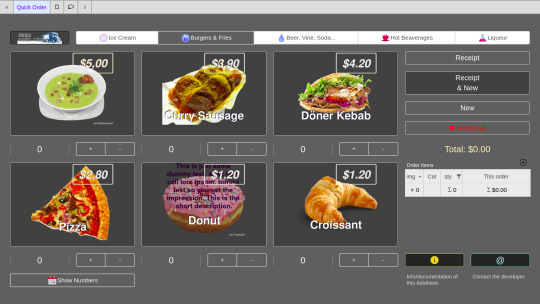
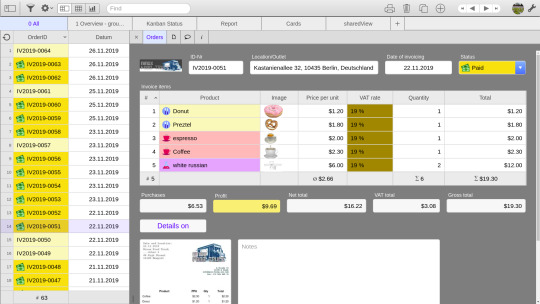
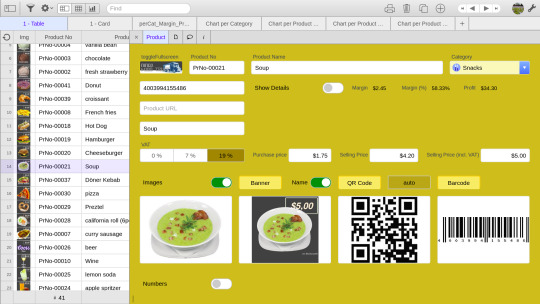
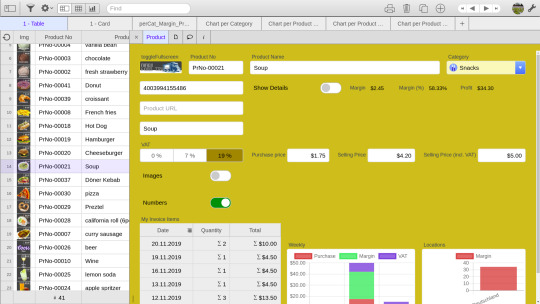
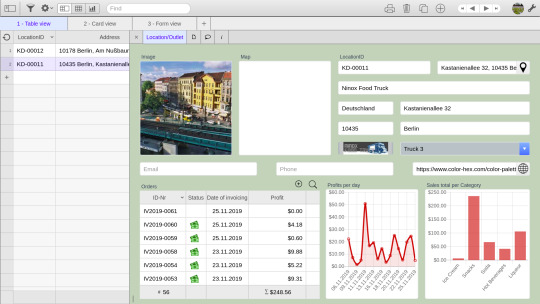
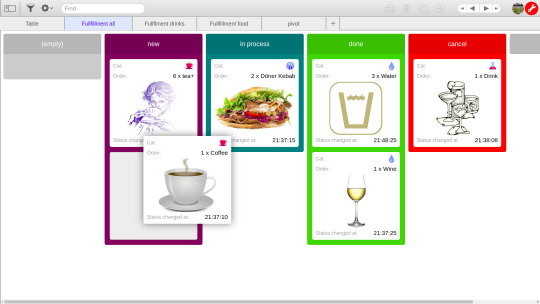
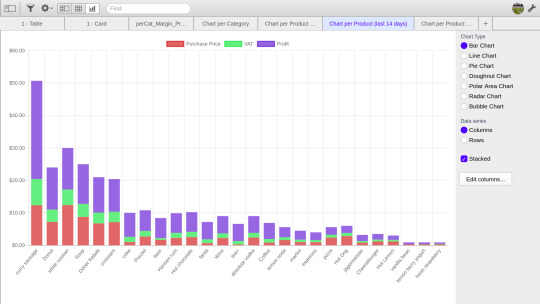
Try it for free here.
0 notes
Text
NocoDB – Turn your SQL database into a Nocode platform
https://nocodb.com/ Comments
1 note
·
View note
Photo

In fact, in only a few minutes, you can create reliable forms with the drag-and-drop form builder and convert anonymous website visitors into leads with unlimited forms, submissions, fields, and custom forms. All of which can be connected to your contact database. #headlessforms #contanctform #nocode https://www.instagram.com/p/CYi7UZetcMt/?utm_medium=tumblr
0 notes
Text
Beta Pitch for Diagram
Beta Pitch for Diagram
Company / App Name: Diagram https://www.ondiagram.com/ Twitter – https://twitter.com/andreas_tzionis What does it do? Diagram is nocode backend builder. It uses simple drag and drop blocks to build complex API endpoints. It is also the first nocode backend platform that supports traditional databases such as MongoDB and Postgres. (more…)

View On WordPress
0 notes
Text
Nocode Software: Unleash Creativity for Innovation and Quick Modeling
Unlock your creative potential by exploring the world of nocode software. Your ideas may be realized more quickly than ever before without the headache of coding thanks to simple tools for experimentation and rapid prototyping.

0 notes
Text
#nocode
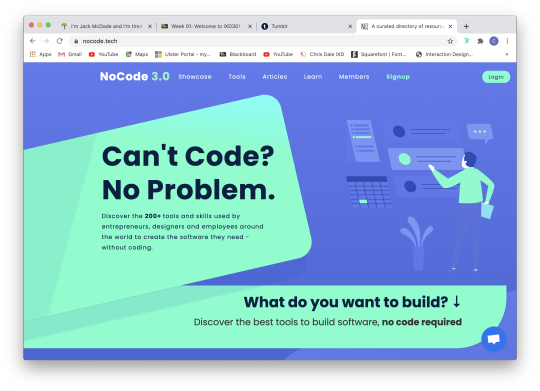
In IXD302 we were asked to go and look up #nocode on twitter. No-Code is a collection of tools that allows people to build software without having to learn and understand code, it usually allows users to drag and drop elements in to build their interfaces. It allows beginners to build nice interfaces that would normally be difficult to do if you where doing it by coding. basically No-Code opens up web building for all. I think this is a pretty amazing thing out there as it allows people who have no coding experience to go on and create a website for their business but for people who’s jobs it is to code and build websites it must be concerning for them as this basically puts them out of business.
Above was a website I found that allows people to build software for the web or for mobile, take payments, send emails and text messages, edit data and integrate with 3rd-party services, all without writing or needing to understand the code it is all done for them.
NoCode 3.0 offers loads of tools for users to make many different things, like payments, app builders, colour pickers, databases, forms, logos and many many many more things, these things I listed don’t even scratch the surface of what NoCode offers.
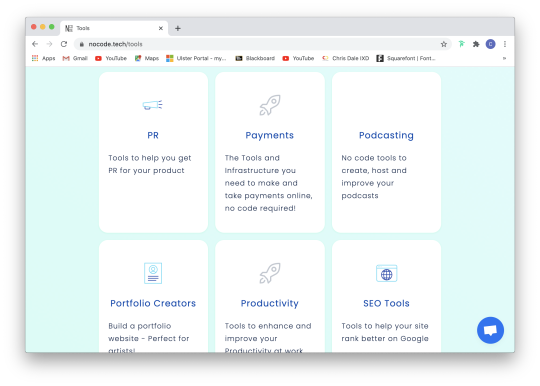
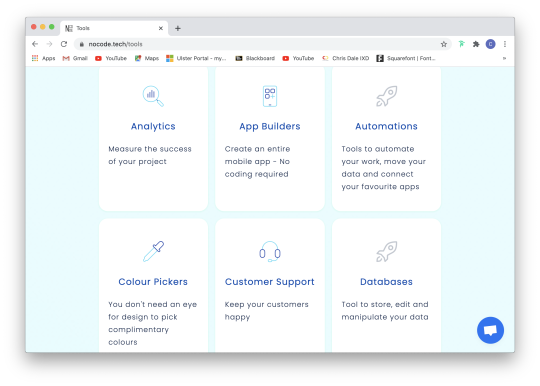
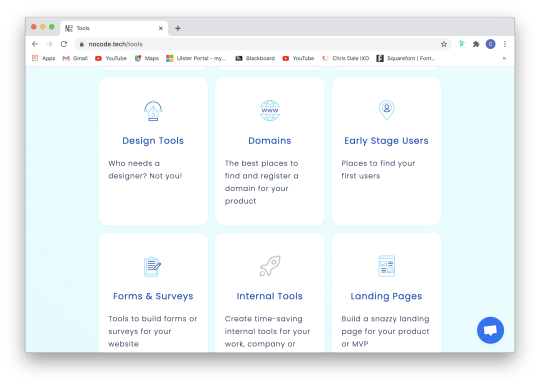
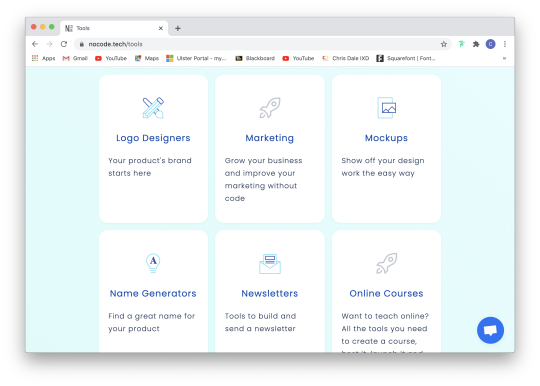
Personally I do like coding my own websites but I can definitely see myself using NoCode to create a website, or and app or anything. I can also see the days of a web designer coming to an end seen as it can now be done by basically anyone online with the click of a few buttons.
0 notes
Text
Popular Design News of the Week: July 27, 2020 – August 2, 2020

Every week users submit a lot of interesting stuff on our sister site Webdesigner News, highlighting great content from around the web that can be of interest to web designers.
The best way to keep track of all the great stories and news being posted is simply to check out the Webdesigner News site, however, in case you missed some here’s a quick and useful compilation of the most popular designer news that we curated from the past week.
Stroke Text CSS: The Definitive Guide

Code Snippets for Easier Coding

Textdb – A Simple Way to Share Small Amounts of Data

10+ Favicon Generators to Make your Brand Stand Out

12 CSS Grid Layouts
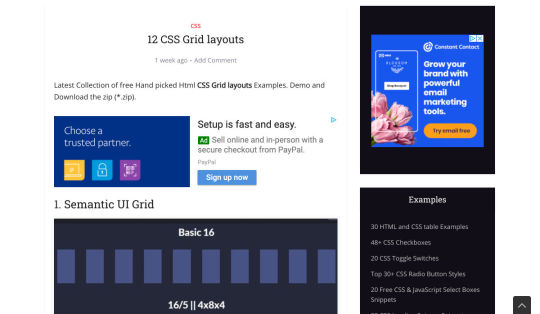
Applying Disney’s Basic Principles of Animation to UI Design

Curiosity Creates

Previewed – Beautiful Mockups & Graphics for your Next App
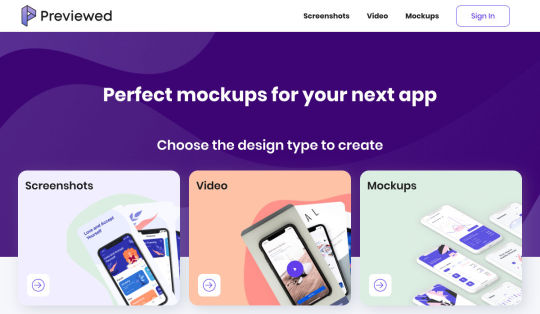
We’re in a Golden Age of UX. Why is Video Chat Still Stuck in the ’90s?

18+ CSS Book Effect

How to Promote a Mobile App with an Animated Explainer Video

Hyperlog – Portfolios for Developers

Site Design: Looks like You Need to Let it Out

Doing Stupid Stuff with GitHub Actions

Is it Good Design? Well, Yeah.

15 Free Adobe XD UI Kits for Web and Mobile App Designers

The Office as You Know it is Gone

How Interactive Content will Increase your Visitor’s Time on Page
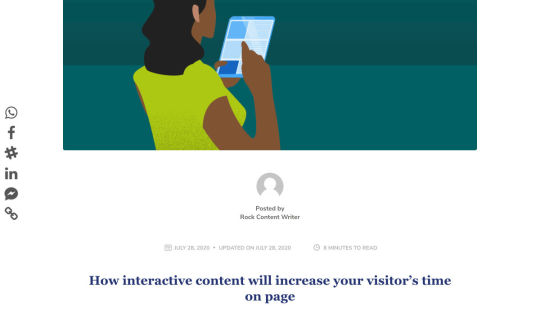
What do Web Design Clients Need from Designers?

Truthmark is a Photography Database Aiming to Stop Misuse in Fake News

200+ NoCode Tool List by WeLoveNoCode

Designing for ‘Why?’
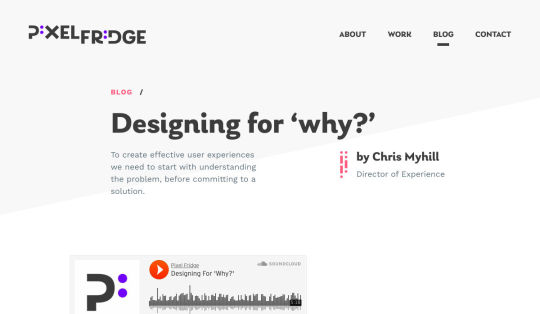
10 Tips Before You Buy a Domain Name

Making Memories to Last (August 2020 Wallpapers Edition)

Design Constraints are not Restraints – They Stoke Creativity

Want more? No problem! Keep track of top design news from around the web with Webdesigner News.
Source from Webdesigner Depot https://ift.tt/2PjP6Fv from Blogger https://ift.tt/2XlFePY
0 notes
Link
Product Management Toolkit - A curated directory of resources & tools for any Product Manager https://www.productmanagementtoolkit.com/Startup Stash - A curated directory of resources and tools to help you build your Startup. http://startupstash.com/HackerNoon's list of artificial intelligence tools - List of tools you can use for personal use or your business needs. https://hackernoon.com/a-list-of-artificial-intelligence-tools-you-can-use-today-for-personal-use-1-3-7f1b60b6c94fSoftware Product Management Stack - Resources and tools to help you manage your software product http://softwareproductmanagement.co/First Search - Startup advice, curated and searchable. https://search.firstround.comOnym - Tools and resources for naming things. https://onym.co/Tech-Blogs-List - A curated database of tech journalists, guests blogs and influencers http://tech-blogs-list.com/Tools to Build - Not knowing to design or code should not stop you from creating awesome stuff. https://saijogeorge.com/website-builders/Remote Starter Kit - Get off to a flying start as a remote team with these mighty-fine tools that are tried and tested by the Hanno team. Power your team’s virtual collaboration and happiness. http://www.remotestarterkit.com/elStartup - A hand-picked directory of the best resources to build a Startup http://elstartup.com/Startup Collections - Great tools and resources for starters http://startupcollections.com/Startup Funding - Fresh dose of startup funding resources http://www.startupfunding.io/CrowdStack - A curated directory of resources & tools to help you with your next crowdfunding campaign http://crowdstack.me/NoCode - Free tools and resources for non-technical entrepreneurs http://www.nocode.tech/Bookcelerator - Books that will make you smarter. https://bookcelerator.com/Startup Mixtape - A directory of business podcasts https://www.startupmixtape.fm/Datastarta - A database of 3150 angel investors to get seed funding https://datastarta.comDesign for Startup - Curated list of useful articles, tools and resources about startup design for designers, developers and non-designer startup founders. http://designforstartup.net/Template Stash - Curated collection of best free themes & website templates. http://www.templatestash.comMarketplace Stack - A curated collection of tools for online marketplaces http://marketplacestack.com/E-commerce stack - A curated directory of E-commerce tools & contents http://ecommerce-stack.com/Gorgias E-commerce stack - Most popular tools from the 10,000+ top e-commerce stores. https://gorgias.io/ecommerce-stackIf you want to see more i made a site to index collections of resources on a lot of topics.You can check it out here: https://resourcy.space
1 note
·
View note
Photo

Bali week 2 We’ve been here in Canggu just over two weeks now. My favorite thing so far was the long, winding drive yesterday to Udara. There was this giant temple in the middle of the rice paddy. Perfectly paved and shaded road zigzagging through the countryside. Every Sunday they have morning lineup of yoga, ecstatic dance, sound healing and chanting. The DJ yesterday was playing these hypnotic tribal beats and there must have been 300 people there. The food has been excellent so far. I get this breakfast and a juice pretty much every day for 100 IDR (~$7). Our coworkers are a little noisy in the workspace but we tolerate them because they’re so adorable. We’re here during the rainy season which means almost every day around 4pm these massive thunderheads roll in and dump rain on us. You have to time your scooter rides accordingly and keep a poncho under the seat. This reincarnation of Jimmy Hendrix melted my face last weekend. Speaking of face-melting: I’m excited to be playing my first open mic here tonight. I’m dusting off some old original tunes. Love that the venue is named after a Ben Howard song - that bodes well. Our next Charity Makeover event is less than 3wks out and we’re in full prep mode. We’re supporting 5 different charities (2 of which are local Balinese ones). @charitymakeover_ I’m using this opportunity to build out the tooling necessary for running events exclusively through our app. The “Nocode” movement is a game-changer for entrepreneurs. The goal is to be able to be a consumer of this app and use it ourselves for everything. Once we can run things entirely without cheating and updating the site manually or opening direct access to the database, we will have reached v1 of the platform and it will be fully possible for anyone to bring Charity Makeover to his/her town using our platform. Some exciting news: there is a high likelihood we’ll be accepted into Portugal’s most renown incubator program with CM. Fingers crossed 🤞 we should know shortly on that. (at Bali) https://www.instagram.com/p/B872yUNHMZj/?igshid=f8n2i14bva91
0 notes
Text
The Renaissance Of No-Code For Web Designers
About The Author
Product designer @ Wix • Coder • Running shoes addict More about Uri …
Just like during the Renaissance, we’re living in times of incredible cultural and artistic innovation. As the Internet evolves, browsers align, capabilities are added and accessibility of technology becomes easier, designers face new opportunities to create, think, and change their status with no-code tools.
The word Renaissance — which means “rebirth” in French — was given to a tremendous period of philosophical and artistic achievements that began in the 14th century.
During this time, there were a wide range of developments, including:
Use of oil paints, rather than tempera, which made the painting process easier.
Use of fabric, rather than wooden boards, which reduced the expenses of painting.
Translation of classical texts in architecture, anatomy, philosophy, and more, making knowledge more accessible to the general public.
These developments and more made the Renaissance one of the most productive artistic eras in history, dramatically reducing the creative barrier and attracting a large audience rather than just a small group of elites.
‘Every block of stone has a statue inside it, and it is the task of the sculptor to discover it.’ — Michelangelo. Some people see a block of stone, while other people see a source of creation. The tools available to us at any given time can bring out our maximum potential. (Large preview)
Just like the Renaissance era, today’s web design field is exploring its potential through no-code development platforms (NCDPs). These tools allow non-programmers to create application software through graphical user interfaces and configuration, instead of traditional computer programming.
The Designer/Developer Mental Model
Taken from ‘The Singularity Is Here: Human 2.0‘ by Amit Maman. Part of his final project at Shenkar College of Engineering and Design, Maman created this triptych to show his vision of the singularity and the turning point in human history that it represents. His work is inspired by principles from the Renaissance era. (Large preview)
In 2000, usability expert Jakob Nielsen introduced “Jakob’s Law,” the idea that users develop mental models of the products they interact with based on their previous experience. The more users can focus on their goal without challenging this mental model, the easier it is for them to achieve that goal.
“CSS is closer to painting than Python.” — Chris Coyier, co-founder at CodePen
Design and development skills are rooted in different types of thinking and require different types of tools. While designers use WYSIWYG editors like Figma, Sketch, and Photoshop to place elements on the canvas, developers work with IDEs like VSCode, Webstorm, and Brackets. In order to remain productive, designers and developers need to be able to make changes and receive instant feedback, according to their mental model.
So, using drag and drop builders may actually interfere with developers who want to debug fast, but working only with a text editor may be inappropriate for designers who want to test composition.
Designers And Code
Many designers understand the functional differences between a mockup and a working product. In order to understand the possibilities of the medium, where to draw the boundaries and how to deal with the constraints, many designers are willing to “get their hands dirty” when it comes to learning code — but they have difficulties.
One of the main reasons designers are not coders is because there is a large gap between the designer’s mental model and the conceptual model of many code editors. Design and development take two very different modes of thought. This mismatch leads to a difficult and frustrating learning curve for designers that they might not be able to overcome.
Code Abstraction
(Large preview)
Abstraction is a core concept of computer science. Languages, frameworks, and libraries are built on different abstraction layers of complexity to facilitate, optimize, and guarantee productivity.
“Visual programming tools abstract code away from the creator, making them significantly more accessible. The real magic of these tools, however, is how they integrate all of the underlying layers of software into end products, providing useful functionality through modular components that can be harnessed through intuitive visual interfaces.” — Jeremy Q. Ho, No Code is New Programming
When working with abstraction layers, there are tools such as Editor X and Studio for websites/web applications, Draftbit and Kodika for mobile apps, and Modulz for design systems, which enable a visual representation of code, in addition to code capabilities.
By adopting a familiar visual medium, the learning curve becomes easier for designers.
If Chris Wanstrath the co-founder and former CEO of GitHub said, “the future of coding is no coding at all,” then surely no-code is a legitimate way to develop — despite the perception that these tools don’t offer the flexibility to write your own code, line by line.
Indeed, we see that interest in the term “nocode” is growing:
Search for the term ‘nocode’ in the last 5 years on Google Trends. (Large preview)
Difference Between Imperative And Declarative Programming
In order to understand the development of no-code tools for designers, you need to know the distinction between two types of programming:
Imperative Programming Deconstruct the result into a sequence of imperatives, i.e. explicit control flow. For example: JavaScript, Python, C ++.
Declarative Programming Declare the result, i.e. implicit control flow. For example: SQL, HTML, CSS.
Declarative languages are often domain-specific languages, or DSL, which means they’re used for a specific purpose, in a specific domain.
For example, SQL is DSL for working with databases, HTML is DSL for adding semantic structure and meaning to content on a web page, and CSS is DSL for adding style.
“There are too many variables to consider. The point of CSS is to make it so you don’t have to worry about them all. Define some constraints. Let the language work out the details.” — Keith J. Grant, Resilient, Declarative, Contextual
Imperative programming sets specific, step-by-step instructions to the browser to get the desired result, while declarative programming states the desired result and the browser does the work by itself.
The Middle Ages
The effort to create a visual interface tool for web design development started in the 1990s through groundbreaking attempts like InContext Spider, Netscape Navigator Gold, Microsoft FrontPage, and of course, Dreamweaver.
Dreamweaver MX, Foundation Dreamweaver MX. (Large preview)
During this period, the common terminology included: visual HTML authoring tool, WYSIWYG web page compositor, or simply HTML editor. The term “no-code” was popular in the 1990s — but for a different reason. In 1996, the American rock band Pearl Jam released their fourth studio album, No Code.
These no-code tools dramatically reduced the creative barrier and attracted a large audience, the Internet wasn’t ready for these types of tools at the time.
This effort was limited for the following reasons:
1. Layout
When the inventor of the World Wide Web Tim Berners-Lee launched his creation in 1989, he didn’t offer a way to design a website.
This came along in October 1994, after a series of suggestions on how to design the Internet by different people — including one from Håkon Wium Lie — who proposed an idea that attracted everyone’s attention. Lie believed in a declarative style that would allow browsers to handle the processing — it was called Cascading Style Sheets, or simply CSS.
“CSS stood out because it was simple, especially compared to some of its earliest competitors.” — Jason Hoffman, A Look Back at the History of CSS
For a long time after, CSS provided design solutions for a single object — but it didn’t give an adequate response to the relationship between the objects.
Methods to address this were effectively hacks, and they weren’t able to handle a great deal of complexity. As sites evolved from simple documents to complex applications, web layouts became difficult to assemble. Instead of using a style in a declarative way as Lie designed, web developers were forced to use imperative programming.
A grid system based on the rules of Swiss designer Josef Müller-Brockmann that was customary in print from the 1940s seems like a distant dream when considering anything related to the Web.
Posters by Josef Muller-Brockmann. (Large preview)
Because of these layout limitations, no-code platforms were forced to add an abstract layer to perform backstage calculations. This layer causes a range of problems, including losing the semantic value of the objects, performance issues, bulky code, a complex learning curve, unscalability, and accessibility issues.
2. Browser Alignment
In the early days, browser makers were the ones who decided how to build the Internet. This led to the Web becoming a manipulative commodity. Competition between browsers led to unique “design features”. This forced the need to rebuild the same site several times, so it could be accessed from multiple browsers.
“Developers in the 90s would often have to make three or four versions of every website they built, so that it would be compatible with each of the browsers available at the time.” — Amy Dickens, Web Standards: The What, The Why, And The How
To offset the need to build websites that fit specific browsers, the World Wide Web Consortium (WC3) community was established at MIT in 1994. The WC3 is an international community working to develop functional, accessible and cross-compatible web standards.
When the standards were introduced, browser makers were encouraged to stick to one way of doing things — thus preventing several versions of the same site from being built. Despite WC3’s recommendations, it took a long time for browsers to meet the same standards.
Due to a lack of alignment between the browsers (Internet Explorer, I’m looking at you), CSS for a time was stuck and no new capabilities were added. Once a declarative language doesn’t support something, it requires you to lean on all kinds of imperative hacks in order to achieve that goal.
3. Data Binding
In the early years of the Web, sites were developed as a collection of static pages with no semantic meaning. When Web 2.0 arrived, it received the description “the web as a platform,” which led to a significant change — pages had dynamic content, which affected the connection to the data, and of course the semantic meaning.
“Sites in the 1990s were usually either brochure-ware (static HTML pages with insipid content) or they were interactive in a flashy, animated, JavaScript kind of way.” — Joshua Porter, Web 2.0 for Designers
Indeed, connecting to data using a no-code approach has existed for a long time — but the user experience was difficult. Additionally, the transition to semantic marking so content could be detected in no-code tools was difficult because of the mixing between declarative and imperative programming.
No-code tools didn’t mesh with those core tasks.
(Large preview)
Proto-Renaissance
On June 29, 2007, the nature of the Internet was changed dramatically. This was the day when Steve Jobs introduced the iPhone — a combination of mobile phone and media player that connected to the Internet and enabled multi-touch navigation.
When the iPhone was introduced in 2007, it was a turning point for web design. All of a sudden web designers lost control of the canvas on which we designed websites. Previously, websites only had to work on monitor screens, which varied in size, but not all that much. How were we supposed to make our websites work on these tiny little screens? — Clarissa Peterson, Learning Responsive Web Design
This created new challenges for web design development. Mainly, how to build a site that can be used on multiple types of devices. Many “hack” approaches to layout design simply fell apart — they caused more problems than they solved.
Everything needed to be reevaluated.
The No-Code Renaissance
(Large preview)
Browsers supporting WC3 standards (Chrome and Firefox ) have huge market share today, which has pushed more browsers to support the standards. The fact that all of the browsers support the same standard, enable alignment in the building of sites and ensure these capabilities would continue to work as standards and browsers evolve.
Methods such as media query, flexbox and grid — which are natively available in the browsers for layout design — have paved the way for flexible layouts, even when element sizes are dynamic.
“When CSS Grid shipped in March 2017, our toolbox reached a tipping point. At last we have technology powerful enough to let us really get creative with layout. We can use the power of graphic design to convey meaning through our use of layout—creating unique layouts for each project, each section, each type of content, each page.” — Rachel Andrew, The New CSS Layout
In this way, HTML became cleaner and it was able to achieve its original purpose: a semantic description of the content.
Finally, thanks to alignment between the browsers and new capabilities, no-code tools are backed by powerful, uniform technology. These changes created a clearer distinction between declarative and imperative. New possibilities were created to solve old problems.
“Simplicity is the ultimate sophistication.” — Leonardo da Vinci
The Effect Of No-code On Designers
Editor X | David’s photo by Igor Ferreira on Unsplash. (Large preview)
The developments of the Internet over the years has led to a situation where the abstraction between design and code is constantly improving. This has implications for the way web designers plan and implement their designs.
1. Design Planning
While popular design tools use static content for dynamic web design, no-code tools allow designers to work with the web’s own materials.
“Photoshop is the most effective way to show your clients what their website will never look like.” — Stephen Hay, author of Responsive Design Workflow
If we have a complex design with different states, micro-interactions, animations and responsive breakpoints — by using no-code tools we can work in a more tangible way.
Additionally, the development of the web enables no-code tools to clearly separate content from the design (which allows designers to visually manage real content). Reflecting the dynamic content in the design (e.g. text, images, videos, and audio), gives designers a clearer understanding of how it will appear.
The advantage of working in the no-code workspace is that interactions appear immediately. This allows designers to quickly test their design choices and see if they work.
2. Design Implementation
After investing in design perfection, designers should explain the visual and conceptual decisions to developers through prototypes. Prototypes not only take time in terms of preparation, but their design is also often implemented incorrectly due to misinterpretations.
With no-code tools, designers are able to place objects on their display and handle their visibility and behavior with ease and speed. In other words, they can design the end result without depending on anyone else.
To use myself as an example, when the Coronavirus pandemic hit, I worked with a small team on a project to help connect young volunteers to isolated seniors. In just three days, myself and another designer built the website and connected user registration data to a database, while the team’s developer worked to integrate data from the site into a separate mobile app.
The Effect Of No-code On Developers
Will no-code tools completely replace developers? The short answer: No. The significant change is in the way designers and developers can work together to create websites.
In addition to the development of CSS, Javascript has also evolved in parallel and perhaps even more. The idea that frontend developers need to control all the abilities makes no sense. And yet, the development of no-code over the years has enabled designers to build their own designs.
It’s a win-win situation, in which developers can focus on developing logic, and designers have more control over the user experience and styling.
The Effort Is Not Yet Complete
I don’t want to leave you with the impression that designers have complete freedom to design with no-code tools. There are still some missing style capabilities that CSS has not yet solved, and these still require imperative development.
Unlike in the Middle Ages, where art was considered as handicraft without a theoretical basis, Renaissance developments changed the status of the artist — who was suddenly considered a polymath.
No-code tools remove bottlenecks, which allows designers to gain more ownership, influence, and control over the experiences they design.
We’ve come a long way from the days when designers weren’t able to bring their designs to life. As the Internet evolves, browsers align, capabilities are added and the accessibility of technology becomes easier — designers are faced with new opportunities to create, think, and change their status with no-code tools.
The no-code movement not only affects how things are done, but by who.
Credits: Yoav Avrahami and Jeremy Hoover contributed to this article.
Further Reading on SmashingMag:
(fb, ra, yk, il)
Website Design & SEO Delray Beach by DBL07.co
Delray Beach SEO
source http://www.scpie.org/the-renaissance-of-no-code-for-web-designers/ source https://scpie.tumblr.com/post/625139862448881664
0 notes